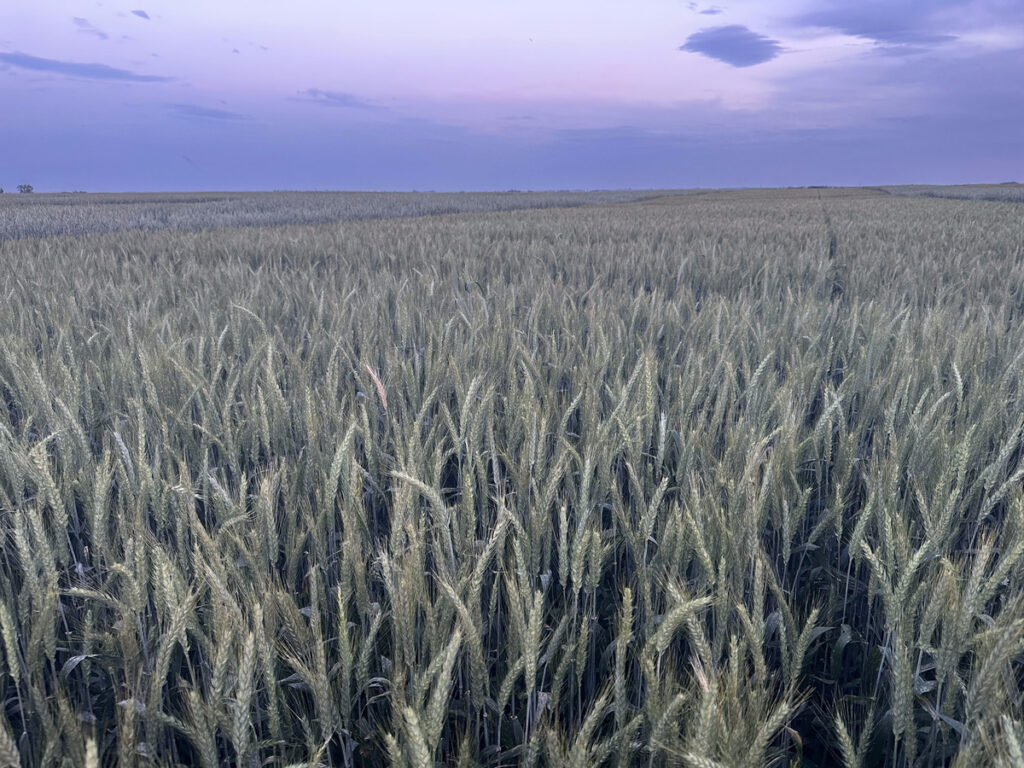Triticale has been gaining traction in the forage market, especially within the dairy and feed yard industry. In a recent interview with Midwest Farm Report, Racey Padilla shared his insights into the development, benefits, and future of triticale in the agricultural sector.
Q: What is Triticale and its Primary Use?
Triticale is a hybrid between wheat and rye, predominantly developed for the forage market catering to various livestock industries. It is versatile, being used for silage, biomass, forage, and even grazing, but its primary application is as a forage product.
Q: How Has Triticale Developed Over the Years?
Initially developed about 90 years ago and perfected around 40 years ago, triticale has seen significant advancements, especially in the last 12 years. It first gained popularity on the West Coast and gradually moved towards the Great Plains and the Midwest, becoming a repeat choice for customers due to its enhanced development and improved crop quality.
Q: What Benefits Does Triticale Offer Over Other Forages?
Triticale stands out for its quality and tonnage as it matures, offering superior feed quality with optimal ADF and protein levels compared to other species like rye, which tends to fall off in quality and tonnage as it matures.
Q: How Does Triticale Perform in Harsh Winter Conditions?
Triticale exhibits impressive winter hardiness, with the top varieties being grown in the Midwest and even Canada, enduring their harsh winters. The focus is on improving winter hardiness, especially in awnless lines, to enhance its adaptability and performance.
Q: How Common is Triticale Usage in the Midwest?
While its usage in the Midwest is growing, it is still in the early stages compared to regions like the Great Plains and the West Coast. The challenge lies in introducing this premium product to markets accustomed to cheaper rye and demonstrating its superior value.
Q: Can Triticale Be Used as a Cover Crop?
Absolutely. Triticale is effective as a cover crop, but its substantial biomass production often encourages farmers to harvest it due to its high forage value, especially compared to rye.
Q: What Are the Focus Areas in Triticale Breeding?
The primary focus is on developing winter-hardy varieties and hybrids, which should ideally bring about a 10-15% increase in biomass. The goal is to enhance winter hardiness, quality, and adaptability across various regions.
Q: How is Triticale Typically Utilized Across Acreages?
Predominantly, about 80% of triticale is used for silage, with the remainder split between hay and grazing. It offers flexibility, allowing farmers to graze and then subsequently bale it.
Q: Is the Growth and Adoption of Triticale Expected to Continue?
Yes, with an anticipated 10-15% increase year over year, triticale is seeing new growth and adoption from customers who, once they try it, tend to become repeat customers due to the tangible benefits it offers.
Q: Summarizing, What Are the Overall Benefits of Using Triticale?
Triticale is forgiving, offering a wider harvest window compared to rye and does not degrade into mere fiber if not harvested immediately upon readiness. Its winter hardiness, increased biomass, and adaptability to double cropping systems make it significantly more beneficial to growers.
Triticale is carving out its niche in the forage market, offering a robust and forgiving alternative to traditional forage crops. With its enhanced development over the past decade and growing adoption across the country, it presents a viable and beneficial option for farmers looking to optimize their forage yield and quality.
For a deeper dive into Racey Padilla’s insights on triticale, listen to the full interview here.
